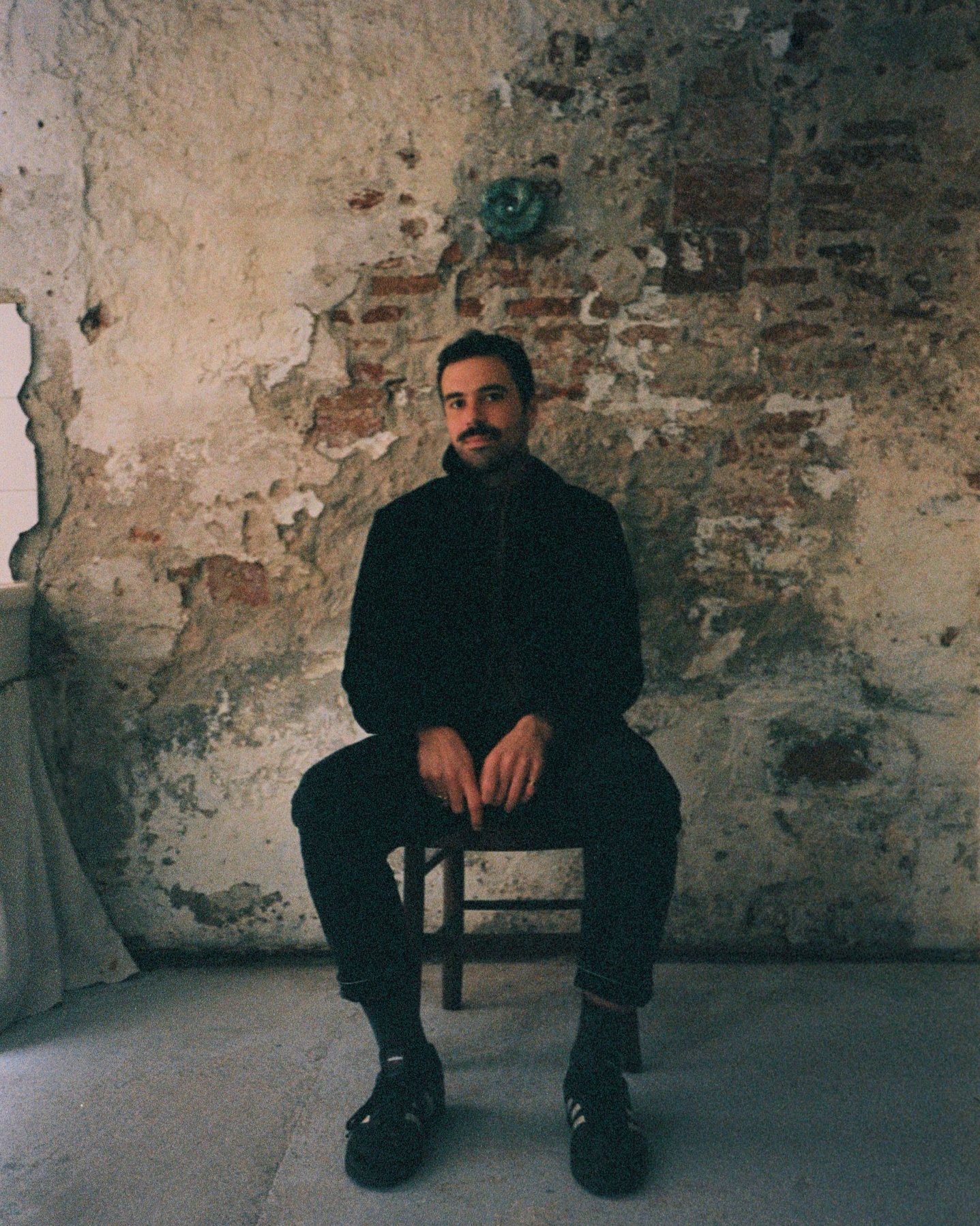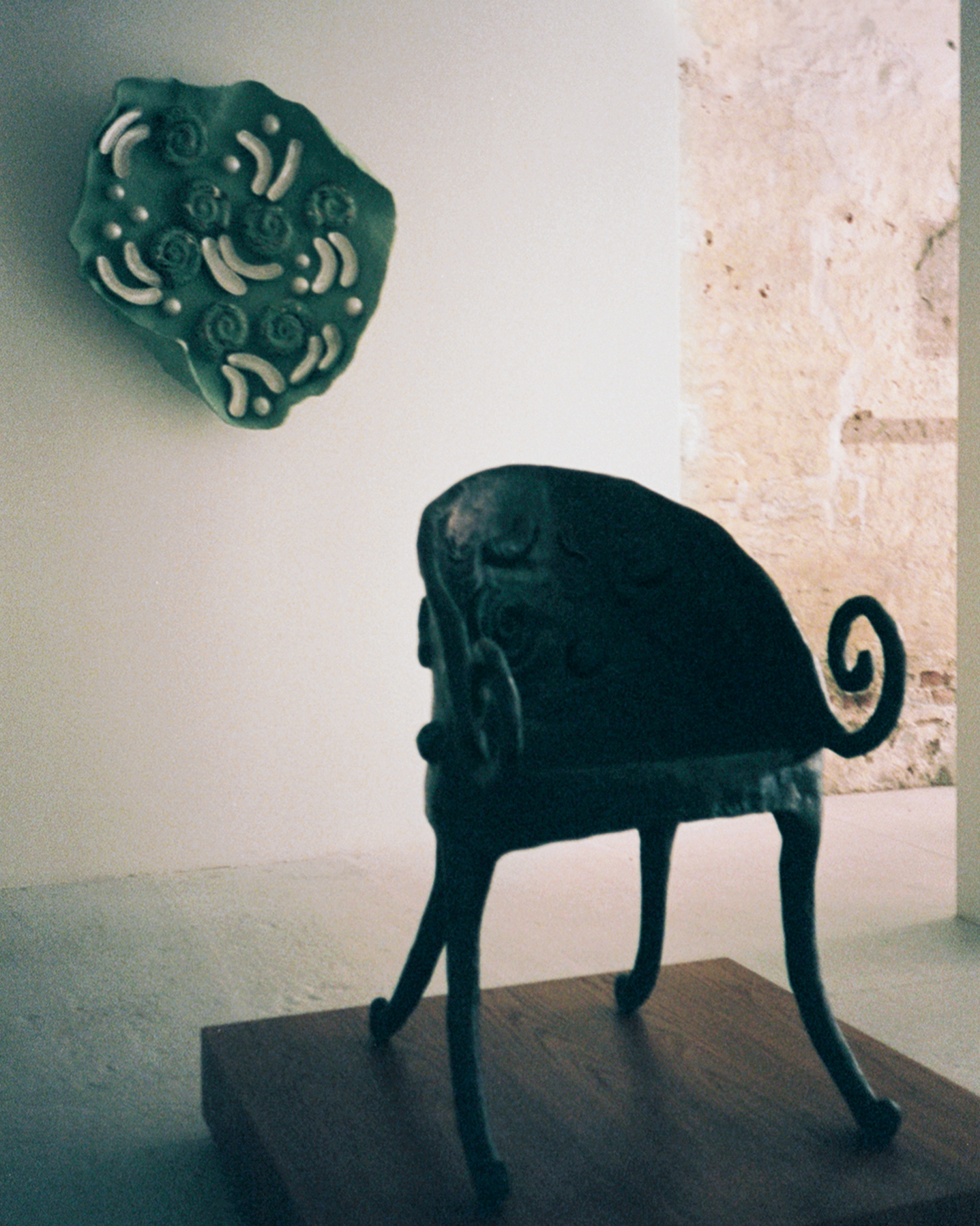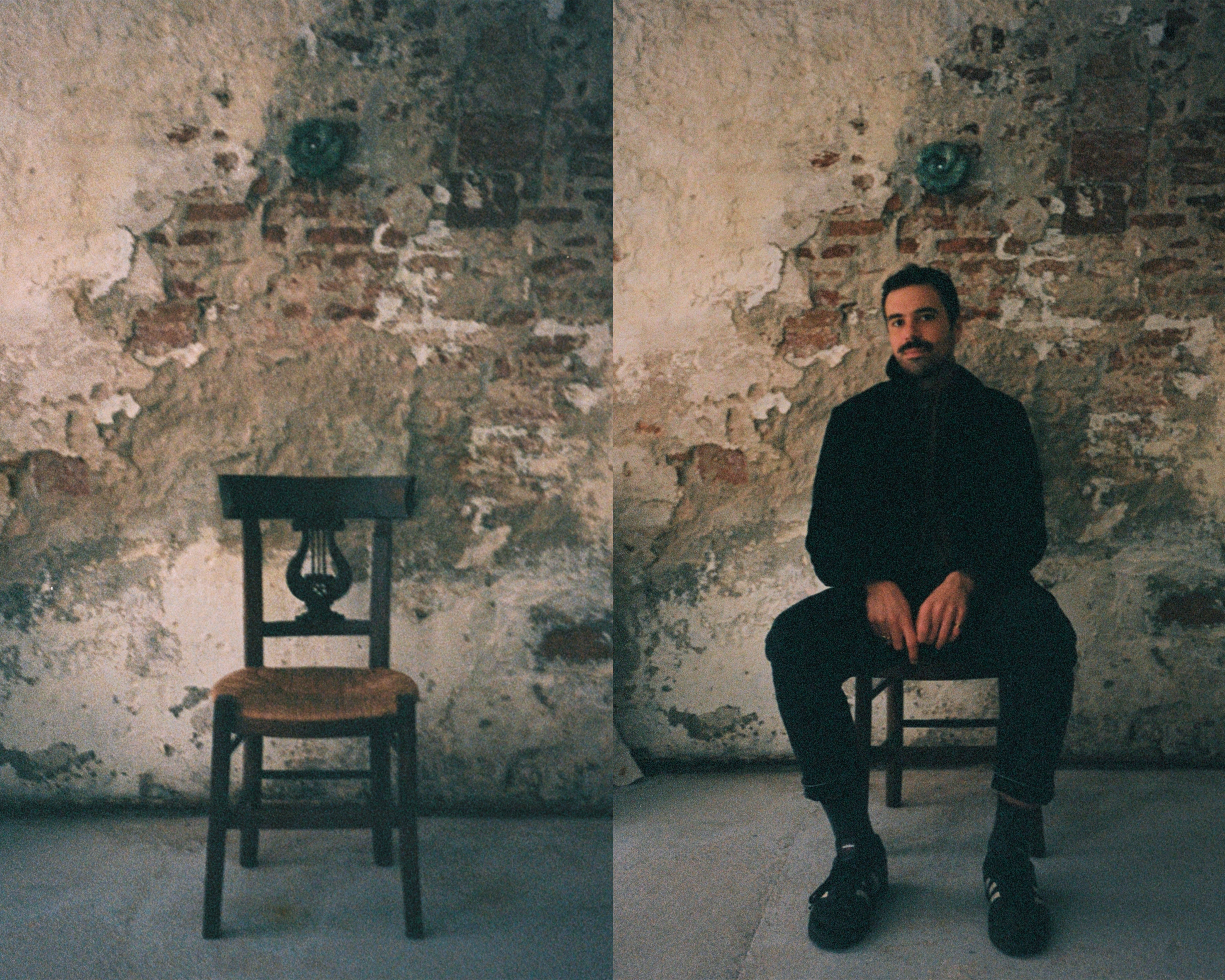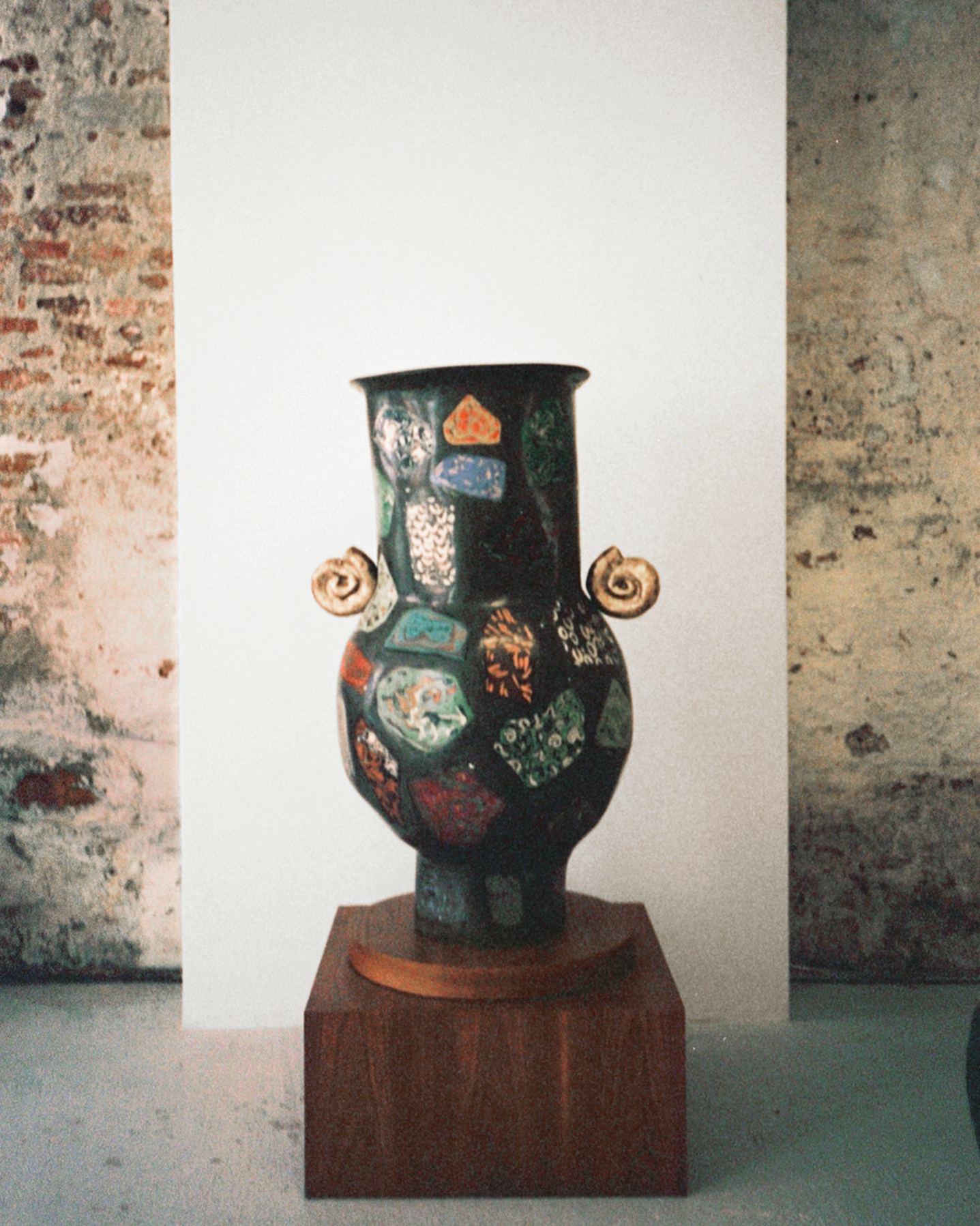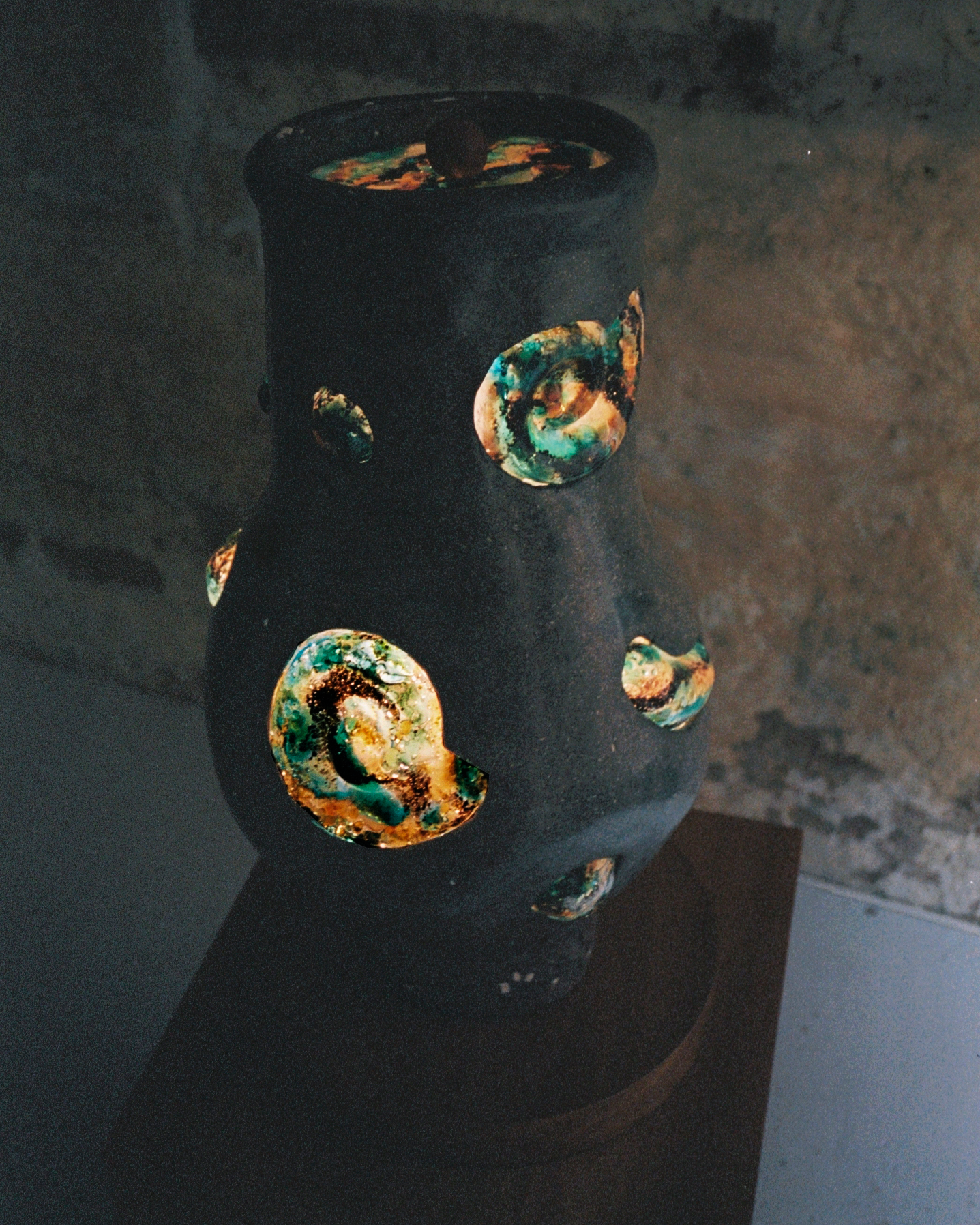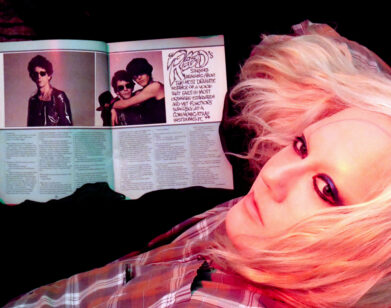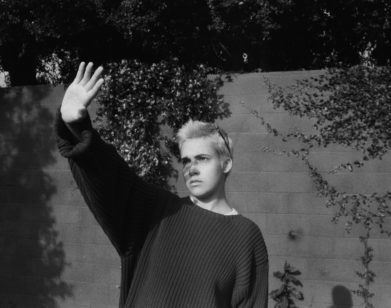VENICE BIENNALE
How Sappho and Kate Bush Inspired Artist F Taylor Colantonio’s Venice Exhibition
Many romantic gays, past and present, have dreamed of leaving their lives behind, moving to Italy and pursuing a creative life. F Taylor Colantonio is one of the few who actually did. After finishing his MFA in furniture design at the Rhode Island School of design, he moved with his partner, Tim Moore, to Rome. In his stunning studio on one of Rome’s most beautiful streets, Via Giulia, he creates sculptural works in bronze, fused glass, and polished cartapesta, a unique material he has been developing since 2012. Experimental in terms of materiality and craft, his works challenge the traditional hierarchy between art and design. Colantonio’s inaugural solo exhibition, Frutti di Mare, which features eleven new sculptures that incorporate otherworldly geologies, queer history, surrealism and poetry, opened with Object & Thing during the 2024 Venice Biennale. Shortly after it opened, I spoke to the artist about finding inspiration in Sappho, working with ammonite, and Italy’s rich history as a reprieve for gay men.
———
ADAM ELI: From Thomas Mann to Tom Ripley, Venice has a long history of drawing gay men to its shores. Aside from the beauty and drama, what is it about Venice that so intrigues the homosexual?
F TAYLOR COLANTONIO: Venice is a port city at the edge of the world. It has always been a place where cultures and ideologies have mixed in dark alleys, and it has always attracted artists, pleasure-seekers, grifters, criminals, hedonists, and, of course, sailors. Filippo de Pisis was famously arrested in Venice by the fascists for hosting a party during which guests were served by young Venetian men in loincloths. I love Venice because it is a city of mysteries, of masks, of dualities and duplicities. Where better to play with identity and reinvention than the city where some of the most iconic surrealist costume balls in history have been held?
ELI: In what way did Venice inspire the show?
COLANTONIO: Venice inspired the show quite a bit, actually. Apart from the material references to Venetian terrazzo and palladiana floors in many of the works, or the formal nod to the gondola chair typology at the center of the show, the works are impressionistic retellings of mythologies that explore queerness through water” “Frutti di Mare” or Fruits of the Sea, is of course a playful reference to the Italian seafood menu offering, but also a play on the idea that in Ancient Greek and Roman myth, water is often a catalyst for queer metamorphosis. Take Narcissus, for example, who is bewitched in the fountain pool to fall in love with his own reflection, becoming so lovesick that his body withers and transforms into a pure white flower. The story had a particular resonance while I was at the gay beach in Calabria last summer and noticed the white sea lilies, or narciso marino, which spring forth from the dunes. I’ve synthesized a telling of this tale, perhaps too obviously, in a mirror which is adorned with stylized bronze sea lilies blowing in a gentle breeze.
ELI: Can you tell me about the chair that sits in the center of the show?
COLANTONIO: The chair was inspired by Nerites who was the great love of Poseidon but was ultimately turned into a sea snail. Their love together is the foundation of the Greek concept of Anteros—or “requited” or reciprocated love. Why have we been programmed to believe that the only true love story is a heteronormative one, when one of the oldest known sources to identify the very concept of pure love refers to a relationship between two men? The form of the chair references the gondola chair typology, which connects the work to Venice, but the shape is also a nod to Nerites’s unrivaled skill as a competitive sea chariot racer, a talent which made Poseidon, the God of the Sea, exceedingly… wet. The chair takes its name, “You will dance will me in the sunlit pools,” from a Kate Bush lyric which I think encapsulates the imagery of a blissful underwater courtship and love story so perfectly, and perhaps foreshadows the tragic ending of the tale: the transformation of Nerites to a sea snail, confined to a small tidal pool, by a jealous older gay who wanted the beautiful youth all to himself.
ELI: Will you tell me about the highly suggestive watering can that you created?
COLANTONIO: The bronze watering can, “Acquadolce,” meaning fresh or sweet water, is of course rendered as an ithyphallic icon, or an erect phallus. From the watering can springs forth a life-giving essence. My friend Peter Miller often says that “gardening is a radical act.” A great example of that is Prospect Cottage, the former home and sanctuary of artist, filmmaker, activist and gardener Derek Jarman. Gardening, like making art, is radical world-building, which is often what those who live outside conventional norms must do for their own survival. Works of art, like gardens, are propagated and nurtured. I find that any instinct or impulse I have to raise children, something that doesn’t interest me much, is satisfied by making my work. Plus, the erect phallus, or fascinum, an image that recurs in my work, is said to protect against bad energy.
ELI: Can you tell me about the wall work named after the Sappho poem?
COLANTONIO: This past summer I took some time to explore a series titled ‘Nocturnes’, each inspired by a poem or song which describes the night sky. There are at least two which derive their imagery and title from a Tennyson poem, a few that reference Kate Bush lyrics, and then there’s this one, “the Moon has set and the Pleiades,” taken from a line in Sappho’s famous “Midnight Poem.” It’s said she wrote these quiet lines to describe the ephemeral feeling of aloneness while waiting for a lover to arrive. I love imagining Sappho gazing up at the same sky that we see today, observing the same celestial bodies. I read that astronomers recently used a software to understand what time of year and exactly where geographically Sappho must have been writing in order for her to observe the night sky as she describes in the poem. It gives me chills to place her so humanly, so physically, in a specific place and time, thousands of years later.
ELI: You created a piece of work in the show for your partner Tim that isn’t for sale. Can you tell me about the piece and why you chose to include it?
COLANTONIO: The work I made for Tim is a small, wall-mounted ammonite with a peep hole and a tiny mirror inside called Eye of Beholder III. In ancient times, it was believed that putting an ammonite fossil under your pillow while you slept could help you have prophetic dreams. Whenever I make one of these little ammonite works, they are installed at the exact eye-height of the person to whom they are dedicated so that only this person can complete or activate the work by looking through the peephole to find a perfect reflection of their own eye. It’s a small, intimate moment. I included it in the show, despite it not being for sale, because it recalls the concept of reciprocated love first explored through the chair, a concept which has an ancient gay origin but is now, fortunately, a reality for me in 2024.
ELI: What queer Italian artists, writers and creatives should we have on our list?
COLANTONIO: I think the two greatest living artists in Rome are Luigi Ontani and Elisabetta Benassi who both have long histories of subverting gender conventions in their work. Ontani plays with identity through costume and persona, a sort of proto-Cindy Sherman, and Benassi by playing with traditionally “macho,” ready-made components like fishing boats, rusted Fiats, and tractors. I would love to see a two-person show of their work. It’s so visually different that the tension there could be profound.
ELI: Your partner Tim recently published a book titled Sleepless Traveler, a collection of poems by the Italian poet Sandro Penna. For those who don’t know, can you tell us a little bit about Penna and the influence he has had on your work?
COLANTONIO: Penna lived and died about a block away from my studio, and his memory is still preserved by some of the older shopkeepers and cafe owners in the neighborhood. He often uses the sea or pools of water to echo this idea of ephemerality. It is both sublime and melancholic at the same time—there is one poem in which he describes a beautiful young military recruit, more beautiful than Botticelli’s Venus, standing at the edge of a fountain pool, and another in which he observes a young, beautiful man at the beach and thinks to tell him that one day he, too, will die.
ELI: What is something really gay that someone visiting Rome or Venice should do?
COLANTONIO: In Venice, stop by Alessandro Merlin’s studio and shop. He glazes gay illustrations onto porcelain teacups and flatware. His studio, collaged with visual references from gay porn history, is a sight to behold, and he may just invite you to pose for his next work. I’m not sure how one arranges a visit to the Villa Albani in Rome, I think you have to write the foundation, but inside there is the marble bas relief portrait of Antinous that Hadrian kept in his bedroom in Villa Adriana at Tivoli. It’s tender to see how sensually Antinous’s ear is rendered, and, thinking about it mounted beside Hadrian’s bed, it’s hard not to imagine it as a sort of proto-spank bank.

